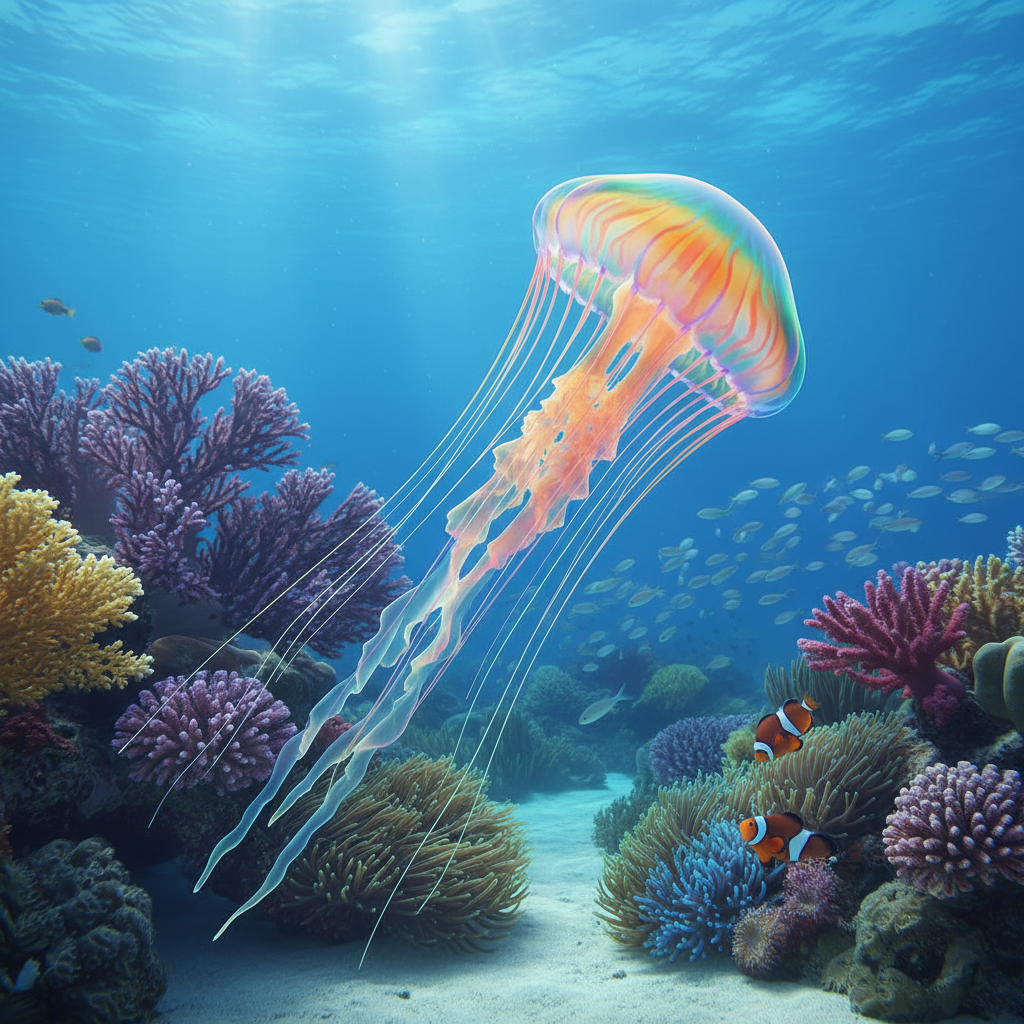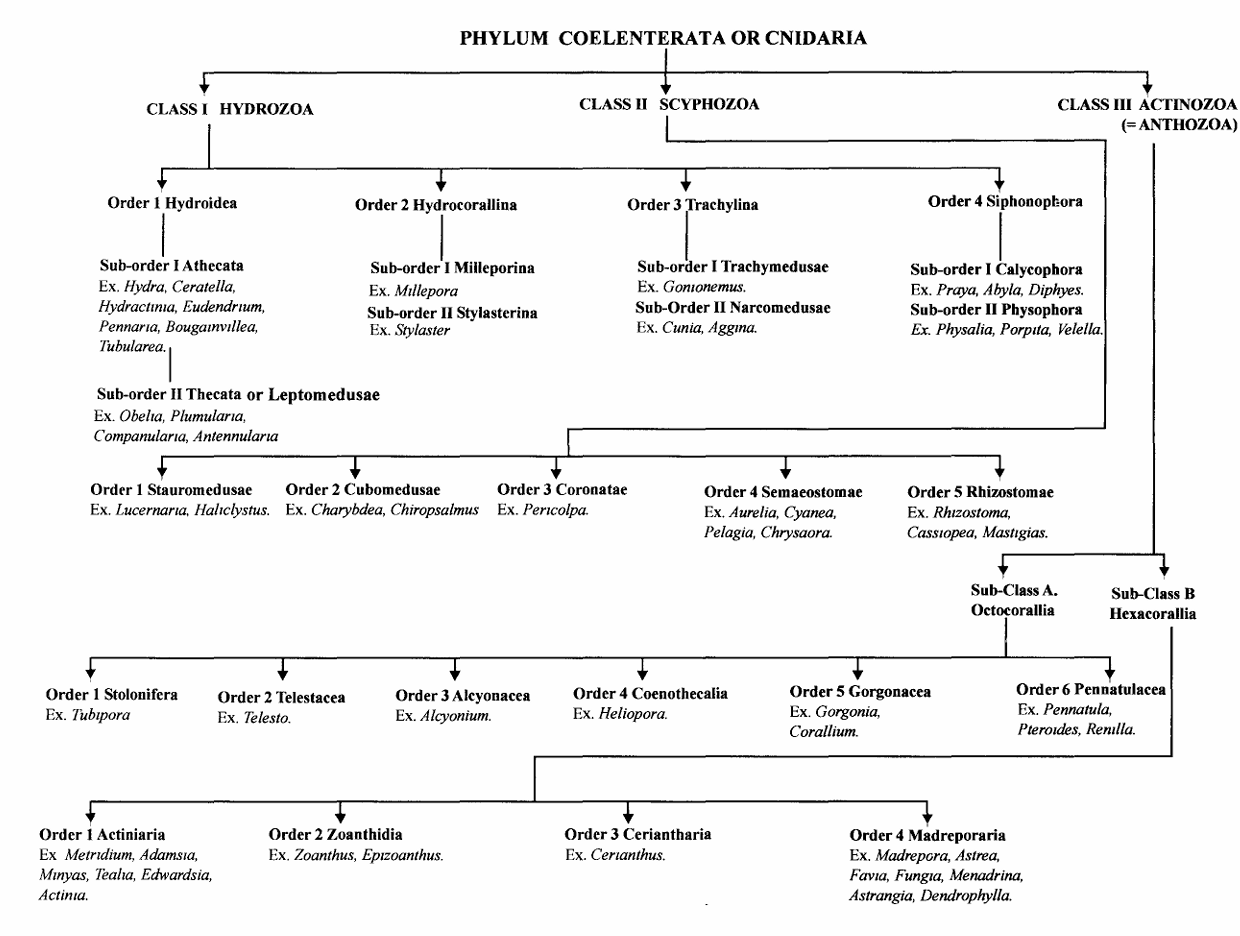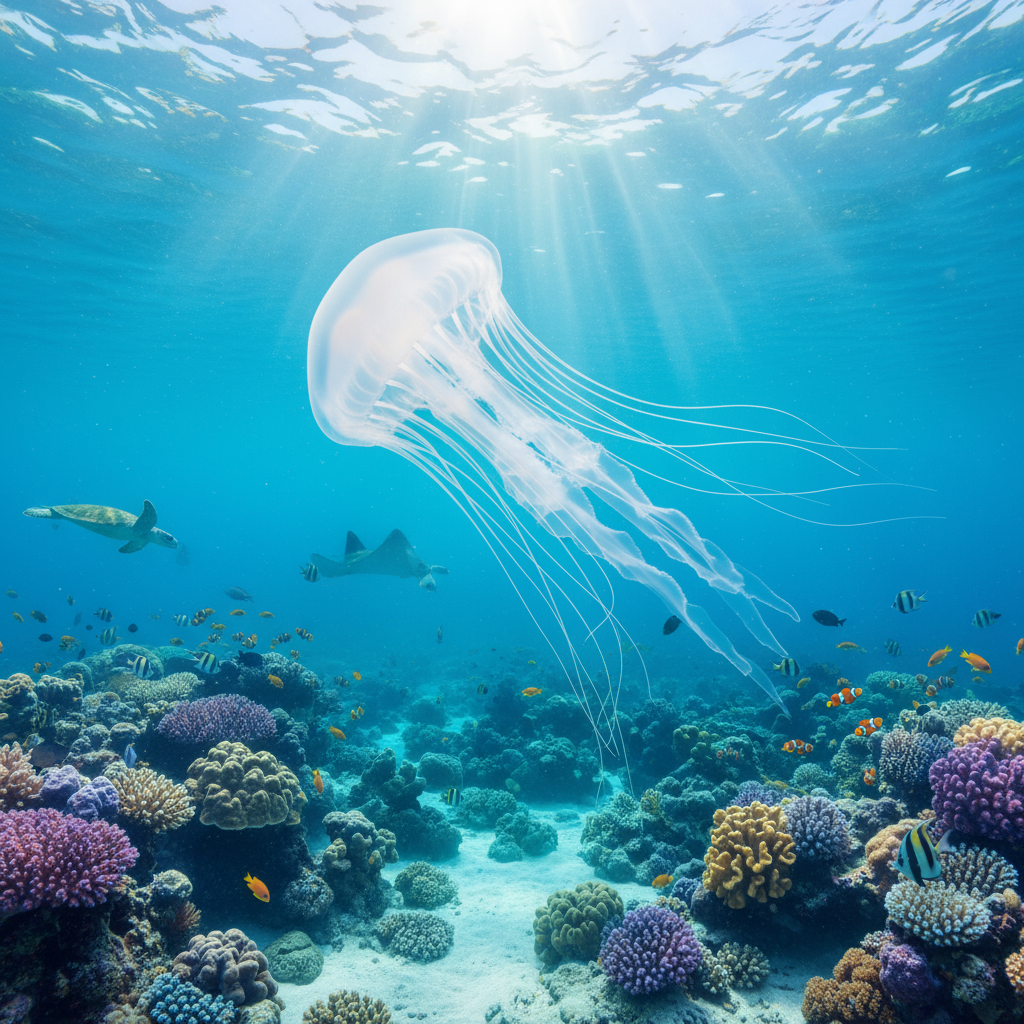Overview and General Characteristics
Phylum Coelenterata (also known as Cnidaria) is a major group of aquatic animals chiefly marine, showcasing an array of biologically diverse and ecologically important organisms. This phylum includes well-known marine forms such as jellyfishes, corals, sea anemones, hydroids, and sea pens. Coelenterates are pivotal to marine ecosystems, contributing to coral reef formation, marine biodiversity, and serving as bioindicators.
- Coelenterates are exclusively aquatic, mostly marine, and inhabit environments ranging from shallow rocky coasts to deep ocean waters.
- The phylum comprises about 10,000 species, ranging from solitary animals like hydra to complex colonial forms such as corals.
- They are the first animals to possess true tissues, being diploblastic with two germ layers—ectoderm and endoderm—and an intervening gelatinous mesoglea.
- Body symmetry is predominantly radial or biradial, facilitating interaction with the aquatic environment from all sides.
- They have a single internal body cavity called the gastrovascular cavity or coelenteron which serves for digestion and circulation.
- Coelenterates show division of labor and polymorphism, with colonies having distinct feeding and reproductive polyps or medusae.
- They possess specialized stinging cells called nematocysts used for defense and prey capture.

Phylum Coelenterata, also known as Cnidaria, comprises a diverse group of primarily marine animals including jellyfish, corals, sea anemones, and hydroids. These aquatic animals are indispensable to ocean ecosystems, contributing to the biodiversity and structural complexity of marine habitats.
Coelenterates are ancient organisms originating from the lower Cambrian period, with about 10,000 species extant today. They are the first animals to possess true tissues, having a simple body structure with two primary germ layers — the ectoderm and endoderm — separated by a gelatinous mesoglea. Their bodies exhibit radial or biradial symmetry, allowing interaction with the surrounding environment from all directions.
These animals have a single internal cavity, the gastrovascular cavity, which serves as the site for digestion, circulation, and waste expulsion. Distinctive to Coelenterates are specialized stinging cells called nematocysts, used for prey capture and defense.
Phylum Coelenterata Classification

CLASS I: HYDROZOA
- Forms: Polypoid, medusoid, or both; solitary or colonial.
Order 1: Hydroidea
- Polypoid stage predominant; medusa present or absent.
- Sub-order IA: Athecata or Anthomedusae (polyp athecate, perisarc does not form hydrotheca) Examples: Hydra, Ceratella, Hydractinia.
- Sub-order IIA: Thecata or Leptomedusae (both polyp and medusae thecate with hydrotheca and gonotheca) Examples: Obelia, Antennularia.
Order 2: Hydrocorallina
- Calcareous exoskeleton. Examples: Millepora.
Order 3: Trachylina
- Medusoid stage dominant; polyps absent or poorly developed.
- Sub-orders: Trachymedusae (e.g., Gonionemus), Narcomedusae (e.g., Cunia, Aggina).
Order 4: Siphonophora
- Animals show polymorphism with different polypoid and medusoid zooids.
- Sub-orders include Calycophora and Physophorida. Examples: Physalia, Velella.
CLASS II: SCYPHOZOA
- Exclusively medusoid forms; bell-shaped medusae without velum.
Order 1: Stauromedusae
- Bell trumpet-shaped, sessile, attached by stalk. Examples: Lucernaria, Haliclystus.
Order 2: Cubomedusae
- Bell cubical; tropical and subtropical oceans. Example: Chiropsalmus.
Order 3: Coronatae
- Bell conical with transverse construction; deep sea forms.
Order 4: Semaeostomae
- Bell disc-shaped; cosmopolitan presence. Examples: Aurelia, Cyanea.
Order 5: Rhizostomae
- Bell margin without tentacle; tropical and subtropical. Examples: Rhizostoma, Cassiopea.
CLASS III: ACTINOZOA (Anthoxoans)
- Exclusively polypoid; no medusa stage.
Sub-class A: Octocorallia
- Tentacles and mesenteries in multiples of 8.
- Orders include:
- Stolonifera (organ pipe coral)
- Telestacea (with lateral polyps)
- Alcyonacea (soft corals)
- Coenothecalia (brown polyps, blue corals)
- Gorgonacea (sea fans)
- Pennatulacea (sea pens).
Sub-class B: Hexacorallia
- Tentacles and mesenteries in multiples of 6.
- Orders include:
- Actiniaria (sea anemones)
- Zoanthidia (epizoic forms)
- Ceriantharia (tube anemones)
- Madreporaria (hard corals forming calcareous skeletons).
- Coelenterates inhabit marine and some freshwater environments globally, favoring clear, warm, shallow coastal zones for reef-building species.
- They exhibit a wide depth range from intertidal regions to deep seas.
- Corals form extensive reef systems providing habitats and food for numerous marine species.

Importance
- Many coelenterates exhibit bioluminescence used for communication and predator deterrence.
- Corals secrete calcium carbonate skeletons that cumulate over millennia, forming coral reefs vital for marine biodiversity.
- Phylum Coelenterata species produce toxins significant in medical research and pharmacology.
- Unique colonial forms like siphonophores showcase complex division of labor and polymorphism in animal groups.
- Coelenterates are identified by their diploblastic tissue organization, radial symmetry, presence of nematocysts, and single gastrovascular cavity.
- Their life cycles involving alternating polyp and medusoid forms, or exclusive polypoid forms, are diagnostic for class-level identification.
- Morphological traits such as tentacle number, body form, and skeletal structures help in genus and species identification.
Phylum Coelenterata represents a fascinating and vital animal group sustaining marine ecosystems through complex interactions, stunning biodiversity, and extraordinary biological traits.
Phylum Coelenterata (Cnidaria) benefits humans in several important ways
- Ecological Services: Coelenterates such as corals form coral reefs, which create diverse marine habitats supporting fisheries critical for human food supply. Coral reefs also protect shorelines from erosion and storm surges, safeguarding coastal communities.
- Economic Importance: Natural sponges (some coelenterates) have historically been harvested as bath and cleaning sponges, providing livelihoods for many coastal communities. Coral reefs attract tourism, contributing significantly to local and national economies.
- Biomedical Applications: Many coelenterates produce bioactive compounds with antibacterial, antifungal, and antiviral properties, fueling pharmaceutical research aimed at developing new medicines and treatments.
- Scientific Study: Coelenterates serve as key model organisms in developmental biology and neuroscience, advancing understanding of fundamental biological processes including nerve function and regeneration.
- Environmental Indicators: Jellyfish and other coelenterates act as indicators of marine ecosystem health, helping monitor biodiversity and impacts of climate change, pollution, and overfishing.
These combined services and products make coelenterates valuable allies in marine conservation, human health, and sustainable economic activities.

Pingback: Hydractinia | Zoologyverse | 2025
Pingback: Stylaster | Zoologyverse | 2025
Pingback: Gonionemus | Zoologyverse | 2025
Pingback: Diphyes | Zoologyverse | 2025